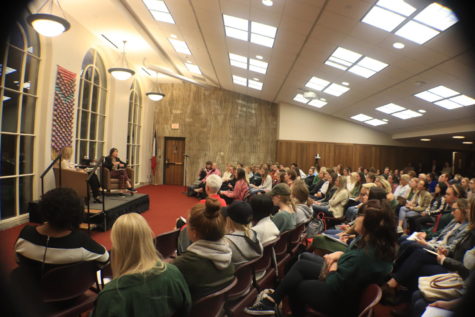Overcoming Bad Habits
March 13, 2016
Bad habits — we all have at least one. Whether it is biting your nails, procrastination, drinking too much coffee or even something more severe like smoking or not eating healthy.
Bad habits can interrupt your life and prevent you from accomplishing your goals.
So, how do you delete your bad habits and stick to good ones?
Quitting a bad habit can be a lot harder than one might think. Tackling it head-on might not be the answer. Instead, you should try to incorporate a new, better habit into your daily routine.
Author and blogger, Michael Hyatt says, “You can focus your attention on eliminating them. Or, you can focus on developing positive habits. As you do so, you will naturally—and more easily—remove the bad habits.”
Here are “5 Unexpected ways to Break a Bad Habit” from an article by Catherine Pearson of the Huffington Post to aid you in your habit reconstruction.
1. Become aware. The first step to recovery is admitting you have a problem.
2. Don’t be negative. Saying you’re not going to do something can only increase the chances of you actually doing it. The brain’s habit-learning system doesn’t really learn anything by not doing.
“Instead, frame your goals in terms of what you are going to do,” Pearson said.
3. Be your own worse critic. Pearson says that often, our brains have permission-giving thoughts, such as ‘one more time won’t hurt me’ or ‘I deserve this’ which leads us to believe that it is okay.
“When you deliberately tune into those permission-giving thoughts and look at them critically much like an outside observer might, you’re better able to call yourself out and hold yourself accountable when they strike again,” says Pearson.
4. Be realistic. As you should be happy about breaking an old habit, you should not be shocked if you go back to it. You should figure out what can go wrong, and use those as a guide, says Pearson, and that way you can be prepared.
5. Focus on your environment.
“People often overlook just how critical it is to establish an environment that makes desirable behaviors easy and undesirable behaviors hard to do,” says Pearson.
Meaning, if you’re giving up sweets, don’t have candy in your house. Managing your environment could be the step that helps you succeed. Being able to understand your behavior first will help make a change more effective, says Pearson.
These aren’t the only steps that can help you break a bad habit. Coming up with your own steps to better accommodate your needs, having a friend hold you accountable or staying busy with other activities; these are all things that can help you stick to better habits.
















